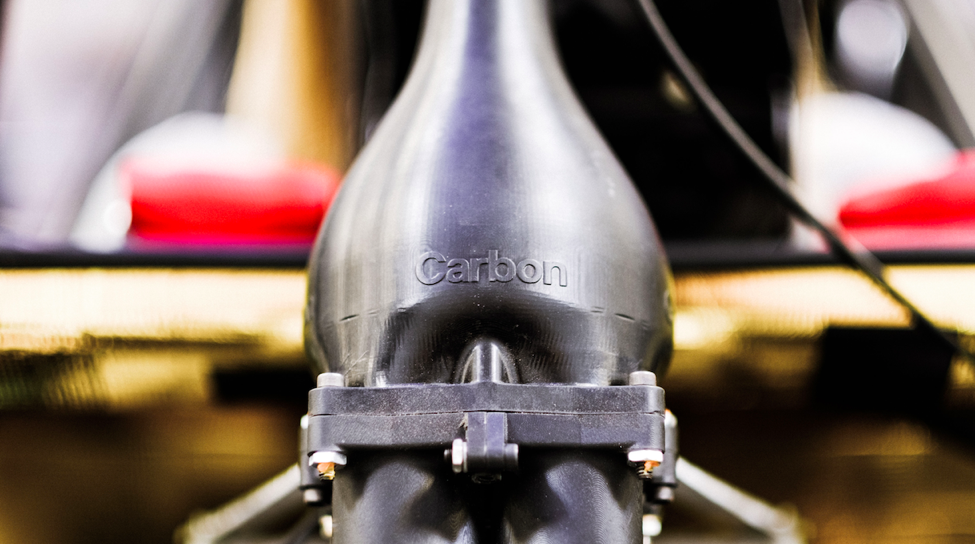A college racing team has redesigned an engine part for its competitive car using Carbon DLS 3D printing technology and improved the engine’s performance by 43%.
Hornet Racing from California State University (CSU), Sacramento redesigned the intake manifold for its Honda CBR600RR series, 4-cylinder engine and 3D printed it out of RPU 70 material, incorporating some custom design features.
As a result, the racing team had its best competitive finish in history at the international Formula Society of Automotive Engineers (SAE) competition. The Formula SAE student design competition has run since 1980.
Problems on the road
Hornet Racing’s Honda engine has four 44mm individual throttle bodies, valves that control the airflow into the engines and help maximize the engine performance. The competition’s rules, however, required a single throttle for all four cylinders.
Engine power in Formula SAE is also governed by a rule dictating that a 20 mm diameter restrictor must be placed behind the single throttle, reducing the airflow even more.
In the engine’s existing state, these design constraints caused a delay in acceleration, uneven power delivery, and ultimately made the race car difficult to drive smoothly and consistently.

Need for speed
To comply with competition rules and improve engine performance, Hornet Racing decided to redesign and replace its legacy aluminum intake manifold. The old manifold, was manufactured using a combination of machining and welding, and made from many components.
The new manifold needed to optimize airflow, integrate with the engine’s plenum tank (a device to equalize pressure within the engine), create minimal boundary layer formation, and reduce the overall weight of the manifold.
To achieve this without additional machining or welding, the Hornet Racing team used Carbon’s Digital Light Synthesis technology, 3D printing the new manifold out of RPU 70, a rigid polyurethane with a tensile strength of 45 MPa and a UL 94 HB flame resistance classification.
Carbon, which has raised $200 million in series D funding for its proprietary Continuous Liquid Interface Production (CLIP) 3D printing, and has begun producing 3D printed mobile phone cases with Incase, can produce end-use products, rather than just prototypes with its DLS technology.

An optimum intake
The redesigned and optimized 3D printed manifold was rapidly manufactured and incurred no tooling costs. Many additional complex design features were incorporated to improve engine performance.
It incorporated a 7-inch bulb design that replaced the two-foot long diffuser and plenum combination. Within this bulb was a spike structure with a golf-ball-like dimpled pattern on its main body, helping air flow directly into the intake runners without the racing car losing any velocity.
Additionally, typically separate components like the fuel-injector ports and the intake runners were integrated, the intake runner tubes had customized diameter, and the overall manifold was lighter, improving vehicle speed and balance.
Let us know your favorite 3D printing application. Make your nominations for the 3D Printing Industry Awards 2018 now.
For more stories on automotive 3D printing, subscribe to our free 3D Printing Industry newsletter, follow us on Twitter, and like us on Facebook.
Featured image shows CSU Hornet Racing’s car. Photo via Carbon.


